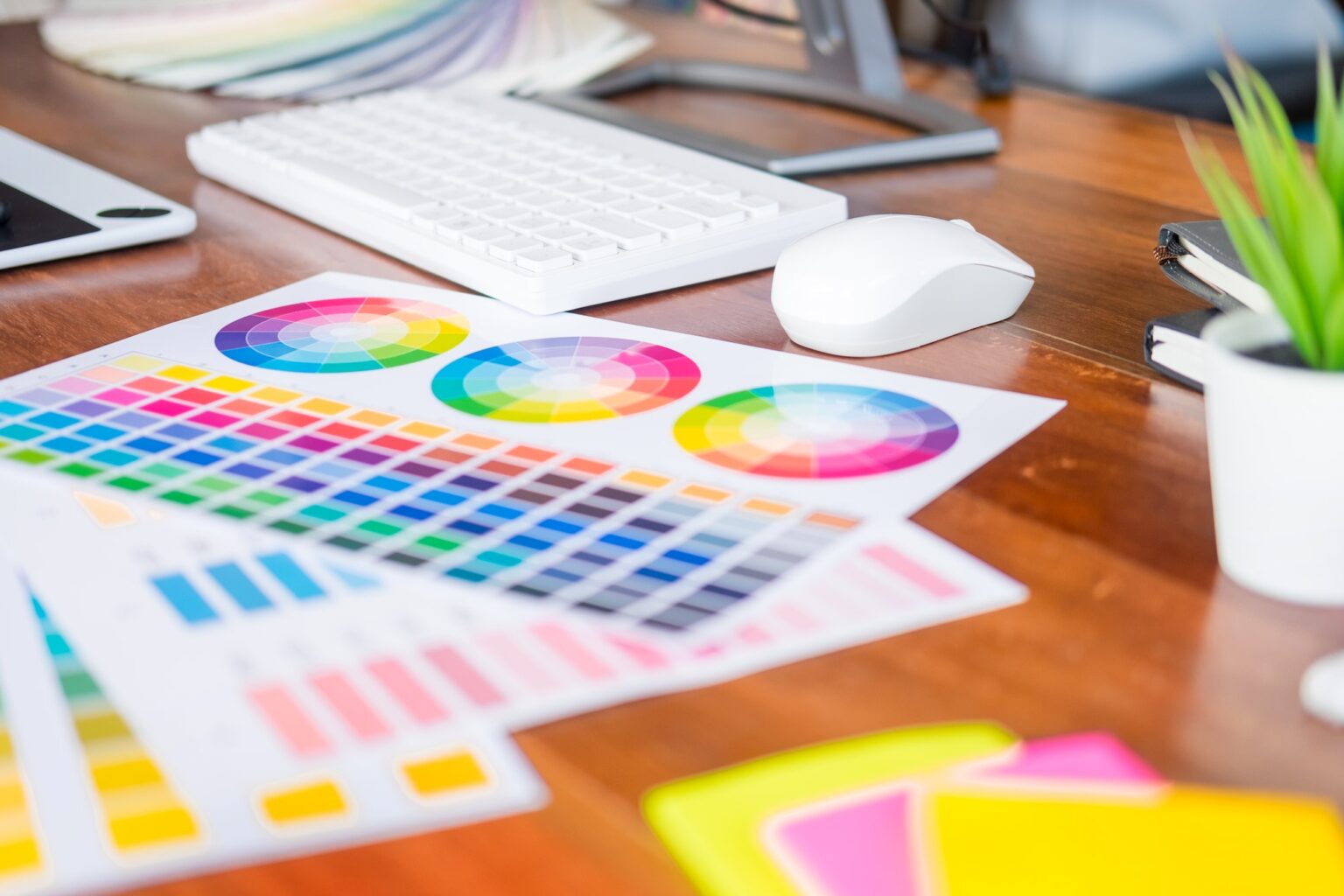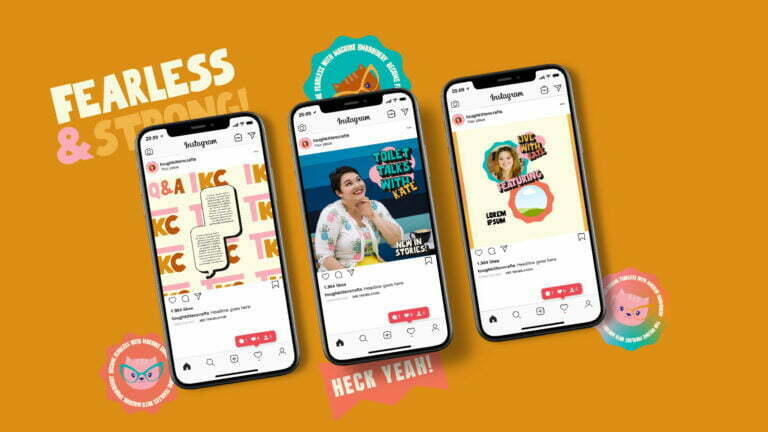In advertising, graphic design is an essential tool that helps businesses communicate their message effectively to their target audience. Graphic design involves using visual elements like colour, typography, images, and layout to create attractive and engaging visuals that capture the attention of potential customers. This article will explore how graphic design plays a vital role in advertising and why it should be an integral part of your marketing strategy.
What is Graphic Design?
Graphic design is creating visual content using various techniques and software tools. It combines images, typography, colours, and layouts to communicate a specific message or idea. In advertising, graphic designers use these skills to create compelling visuals that can help businesses market their products or services more effectively.
The Importance of Graphic Design in Advertising
In the world of advertising, first impressions are everything. With so many competing brands vying for your target audience’s attention, you need eye-catching visuals to make your brand stand out.
This is where graphic design comes in handy. Good graphic design can grab people’s attention quickly and convey information about your brand or product in a way that resonates with them emotionally.
By using visually appealing designs that are easy to understand and remember at a glance – logo designs with clear messages, for instance – you can create an emotional connection with potential customers before they even read or hear anything about what you’re offering. : graphic design isn’t just about making things look pretty; it’s a strategic tool used by advertisers worldwide for creating compelling visuals that grab people’s attention quickly while conveying information about their brand or product in a way that resonates emotionally with their target audience.
The Basics of Graphic Design in Advertising
When considering advertising, one can’t help but think of the flashy, eye-catching ads we see all around us. A big part of what makes these ads so successful is graphic design. But what exactly is graphic design in the context of advertising?
Simply put, it uses visual elements to communicate a message or idea to an audience. Its purpose is to grab attention, convey information and evoke an emotional response from a viewer.
The Importance of Visual Appeal in Advertising
In today’s fast-paced world, where people are constantly bombarded with information and advertisements, making an impact quickly is crucial. This is where visual appeal comes into play, and people are naturally drawn to visually pleasing or exciting things.
A well-designed ad will catch someone’s eye and make them stop scrolling or pause their activity momentarily. It creates an opportunity for the message being conveyed by that ad to be seen and potentially absorbed.
Elements of Graphic Design: Color, Typography, Layout, Imagery
There are four key elements involved in graphic design: colour, typography (the style and arrangement of text), layout (the placement and organization of all parts on a page) and imagery (the photos or illustrations used). These elements work together to create a cohesive visual experience for the viewer.
Colour plays a significant role in setting the mood and tone within an advertisement. Bright colours evoke excitement or energy, while muted colours convey a more relaxed feeling.
Depending on the intended message, typography can also set the tone using bold or elegant fonts. Layout refers to how elements are arranged on a single page, how multiple pages work together within an ad campaign and any spacing between different sections within an ad.
Imagery provides visual interest for viewers while conveying meaning explicitly related to the advertised product or service. For example, an ad for a new car might show the vehicle in action on a scenic road to evoke feelings of adventure and freedom.
Overall, graphic design is an essential component in advertising that should not be overlooked. By utilizing these basic elements, designers can create compelling ads that capture attention and leave a lasting impression on viewers.
The Role of Graphic Design in Branding
How graphic design helps establish brand identity
In today’s market, where many competing products and services exist, branding has become essential for success. Branding is creating a unique image or identity for a product or service that distinguishes it from its competitors.
Graphic design plays a crucial role in branding as it helps create visual elements that represent and communicate the brand’s values and message to the target audience. A well-designed logo, colour scheme, typography, packaging, and advertising materials can help establish brand recognition and loyalty.
Examples of successful branding through graphic design
One of the prime examples of how graphic design can aid in establishing brand identity is Apple Inc. Apple revolutionized personal computers by creating visually appealing designs that were simple to use while delivering exceptional performance. They used minimalistic designs to create an iconic logo with an Apple silhouette representing their philosophy perfectly: simplicity is the ultimate sophistication. Another example would be Coca-Cola – one of the world’s most recognizable brands.
The Coca-Cola Company used red and white as its primary colours with a distinctive script typography logo that has remained unchanged since 1887. With excellent marketing campaigns like “Share a Coke” and “Taste the Feeling,” they have managed to keep their customers engaged while staying true to their brand identity.
Good branding through effective graphic design helps build consumer trust by differentiating your product or service from your competitors. The more consistent your visual elements are across all touchpoints (such as websites, packaging, and print ads), will increase consumer loyalty, ultimately leading to sales growth.
The Impact of Graphic Design on Consumer Behavior
As much as we’d like to think that our purchasing decisions are based solely on rational thought, we are greatly influenced by the visual aspects of advertising. Graphic design plays a crucial role in this process by creating visually appealing ads that capture our attention and make us more likely to engage with the advertised product or service.
How Visual Elements Influence Consumer Decision-Making
Colour, typography, layout and imagery are all visual elements that can significantly impact consumer behaviour. For example, studies have shown that warm colours like red and yellow can convey excitement and urgency, while cool colours like blue and green can create a sense of calmness and trust. Typography also plays a vital role in giving certain emotions or attitudes towards a product, while layout and imagery help to communicate the message.
Case Studies on the Effectiveness of Graphic Design in Advertising
One great example of how graphic design can influence consumer behaviour is the “Got Milk?” campaign. The simple yet effective logo featuring milk droplets formed into a mustache became instantly recognizable nationwide.
This led to increased sales for dairy farmers across the country. Another excellent case study is Nike’s “Just Do It” campaign featuring its iconic swoosh logo, which helped establish Nike as a leading sportswear brand.
Graphic design has more than just an aesthetic purpose; it has real-world applications for shaping consumer behaviour. By understanding how visual elements influence people’s decision-making processes and studying successful case studies within the industry, businesses can create effective advertising campaigns that resonate with their target audience.
The Evolution and Trends in Graphic Design for Advertising
Historical overview of the development of graphic design for advertising
Graphic design in advertising has a long history, dating back to the early 1900s when advertisers started using posters and billboards to promote their products. As technology advanced, so did the art of graphic design. In the 1920s and 30s, the Art Deco style became popular in advertising, featuring bold typography and geometric shapes.
In the 1950s, pop art emerged with bright colours and playful designs. The 1980s saw a shift towards digital design with the introduction of personal computers.
Current trends and innovations in the industry
Today’s graphic design trends continue to evolve as technology advances. Minimalism is a popular trend that emphasizes simplicity and clean lines.
Bold typography is another trend that has gained popularity, with designers using custom fonts to make an impact. The use of animation is also on the rise for digital ads, adding movement and interactivity to designs.
In addition to these trends, several innovative advertising techniques are used in graphic design. Augmented reality (AR) is a technique allowing consumers to interact with products through their mobile devices.
Another technique gaining popularity is user-generated content (UGC), where consumers create content related to a brand on social media platforms. As designers continue experimenting with new techniques and technologies, seeing what new developments will emerge in graphic advertising design is exciting.
Niche Subtopics:
A) Packaging Design:
Have you ever picked up a product in the store simply because the packaging caught your eye? That’s the power of packaging design. Not only does it serve as a way to protect and contain products, but it also plays a crucial role in brand recognition and consumer behaviour.
The importance of packaging design lies in its ability to make products stand out on shelves among competitors. Colours, fonts, and images used on packaging can evoke certain emotions and influence purchasing decisions.
For example, bright colours are often used for children’s products to appeal to younger audiences, while elegant designs are used for luxury items. The most successful packaging designs include Coca-Cola’s iconic red label, Apple’s sleek product boxes, and Hershey’s classic chocolate bar wrapper.
B) Digital Advertising:
In today’s digital age, graphic design is increasingly important in advertising through various digital channels such as social media platforms, websites, and mobile apps. The use of visually appealing graphics helps to catch consumers’ attention amidst the constant stream of information online.
Graphic design is essential for creating effective digital ads that look good and communicate messages effectively. Best practices for designing effective digital ads include keeping messaging clear and concise with easy-to-read text, using high-quality images or illustrations that align with the target audience’s interests or preferences, applying consistent branding across all platforms used by your business so customers can quickly identify your brand no matter where they see it.
C) Print Advertising:
While digital advertising has become more prevalent, print advertising still offers unique advantages over its digital counterpart, such as being highly targetable based on specific demographics like age group or gender, unlike online ads, which might be lost in the sea of distractions. In print advertising, visually appealing designs can help to call attention to the ad and make it more memorable. High-quality images, bold colours, and straightforward typography can make the message stand out and draw the reader in.
Effective print ads often have a clear message or call-to-action that encourages consumers to act, such as purchasing or visiting a website. Examples of successful print ads campaigns include Nike’s “Just Do It” campaign, which has been running for decades, Volkswagen’s “Think Small” campaign, which put a new spin on car advertisements at the time, and Absolut Vodka’s iconic bottle-shaped ads.
Lesser Known Details about Graphic Design in Advertising
Fun facts about graphic design in advertising
Did you know that the world’s first billboard advertisement was created in 1835 for a circus? It featured a hand-painted, life-size image of an elephant and became an instant sensation.
Another fun fact is that the iconic Coca-Cola logo was designed by a bookkeeper named Frank Mason Robinson, who also came up with the name for the drink. Did you know that the famous “Got Milk?” campaign was created in response to declining milk sales in California?
The psychology behind graphic design in Advertising
Graphic design plays an essential role in shaping consumer behaviour and decision-making. For example, colour can evoke specific emotions or associations – blue is often associated with trustworthiness, while red can convey passion or urgency. Similarly, typography can affect how easily information is processed and remembered – sans-serif fonts are easier to read on screens, while serif fonts are often preferred for printed materials.
Conclusion
Graphic design is essential to successful advertising campaigns – it helps establish brand identity, catches consumers’ attention, and influences their purchasing decisions. With the continued evolution of technology and changing consumer preferences, graphic designers need to stay up-to-date on current trends and best practices. By leveraging creativity and strategic thinking, designers can create impactful visual experiences that resonate with consumers and drive business results.









